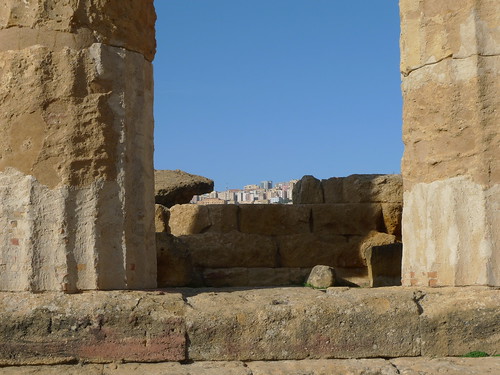
Image : http://www.flickr.com
The underlying principles all Renaissance art was its artistic honesty to nature, as opposed to tradition, which had been the style of pre Renaissance art.
This principle was deduced from the study of the new found learning, being spread throughout Italy by Greek refugees, and the consequent awakened interest with which people regarded the remains of ancient architecture, sculpture and other art forms, constantly being unearthed in their own country.
With the adoption of the classical principle of truth to nature, naturally came the adoption of a second, that of the study of the antique as the true path to excellence in art or letters. We cannot fail to recognise these twin principles at work in the writings of the masters of the musical Renaissance.
A parallel to that truth to nature, which the painters and sculptors of the Renaissance proper acquired from the study of Greek art, may be traced in the efforts of the composers of the Renaissance, to make their music more and more flexible and responsive to the varied play of human sentiment.
Musicians as well as sculptors and painters studied antique art. Although for musicians not as profitable, the lessons to be learned from antiquity by musicians were not for educational purposes but more for inspiration and creativity.
Palestrina has already been mentioned as typifying the culmination of the musical development of the early ages, and now, in taking up the consideration of a new period, we have, in the first place, to concern ourselves with a man who was already forty eight years old when Palestrina was born. The Flemish composer Adrian Willaert, chapel master of St. Mark's at Venice.
Willaert may be considered as belonging at the same time to the old order and the new, for while, in common with his fellow citizen, Orlando di Lasso, some may say he was one of the last and greatest of the Flemish masters. At the same time, he must be reckoned as a forerunner of the musical reformers of the Renaissance.
Willaert, although he did not originate any new forms in music, may lay claim to have been one of the first to give musical expression to that love of colour, movement, and general spirit of adaptiveness, which are such outstanding characteristics of the Renaissance period.
The forms he employed were those used by his contemporaries and immediate predecessors. The Mass, Psalm, Motet, and Madrigal. However, in them all his colour sense was very strong, comparatively speaking, that is, for that tonal splendour, which led the Venetians in their enthusiasm to term the works of their cherished "Messer Adriano" aurum fotabik or "drinkable gold" might not be so readily apparent to a modern audience.
Although to a musician, instituting a comparison between the works of Willaert and those of earlier writers, the effects gained through the use of broadly contrasting harmonies by the Flemish master cannot fail to appear strikingly original.
While dealing with Venetian music mention must be made of Andrea and Giovanni Gabrielli, uncle and nephew, who represent a later development of the style of Willaert. Giovanni Gabrielli (1557-1612) carried his experiments in tone colour into the region of pure instrumental music; and his "Symphonic Sacrse," the first volume of which was published at Venice in 1597, entitles him to rank as one of the earliest of writers for the orchestra.
In the first volume of this work, there are sixteen pieces for from eight to sixteen instruments, and in the second volume, there are canzonets for as many as twenty-two instruments. These compositions are written for violins, cornets (not the cornets of modern times, but wooden instruments), and trombones.
After the time of Willaert and the Venetians, were the actual workers in the Renaissance of music, and the first of their achievements, the invention of the Music Drama or Opera.
Mike Shaw is an organist and keyboard player and owns music websites, http://www.mikesmusicroom.co.uk, http://www.keyboardsheetmusic.co.uk and http://musical-instruments-uk.mikesmusicroom.co.uk/